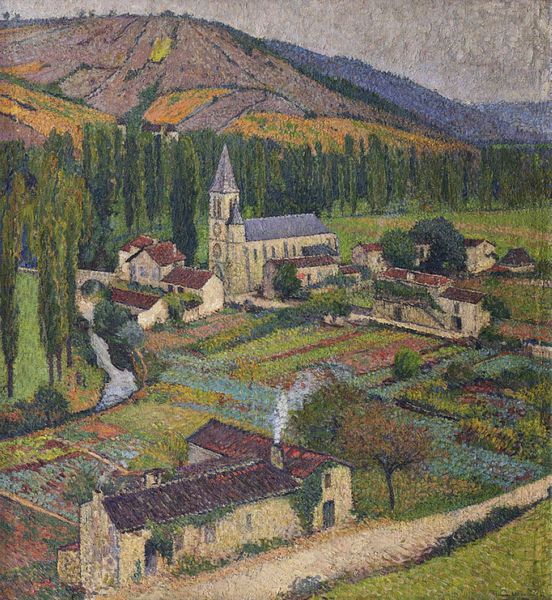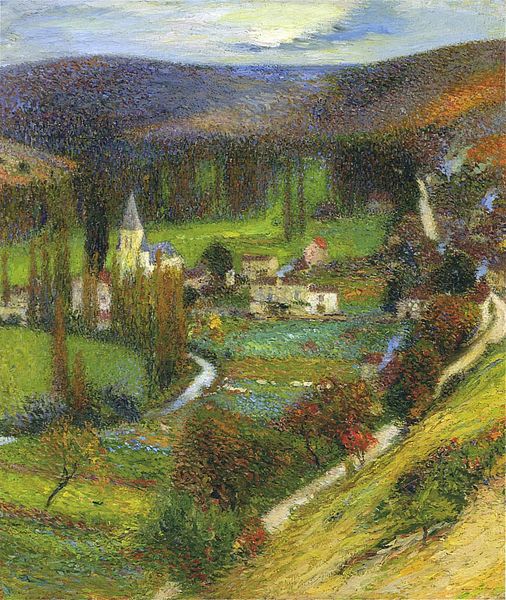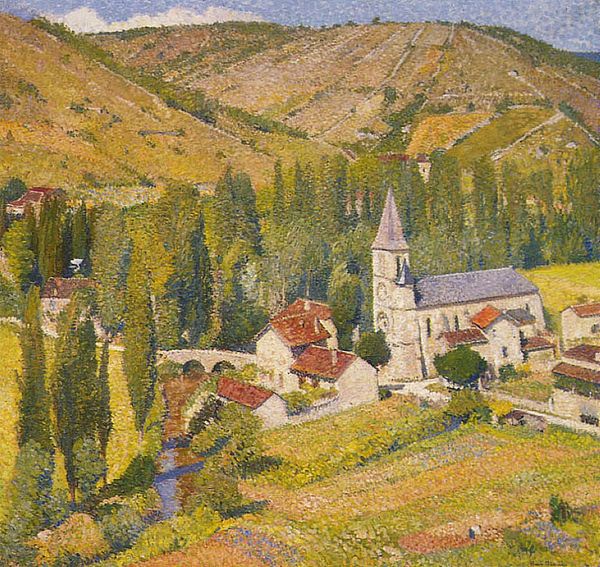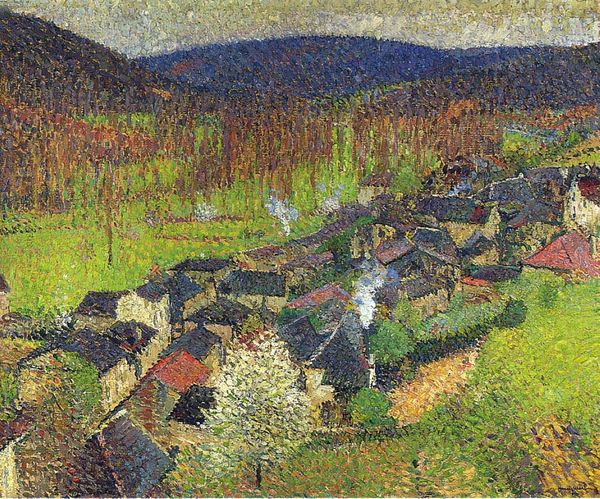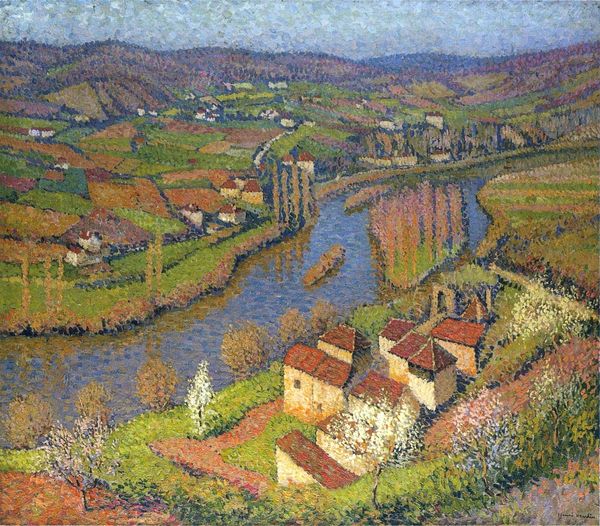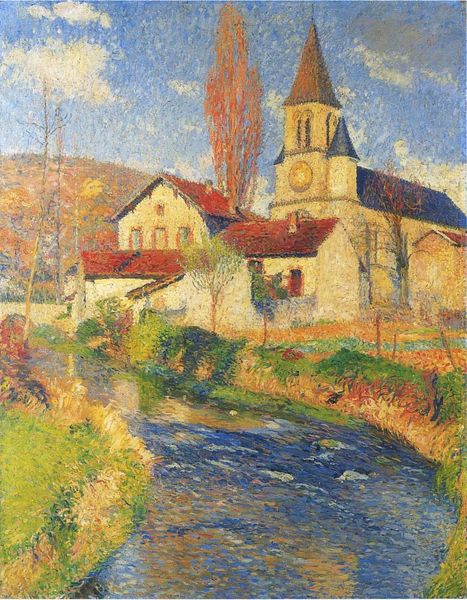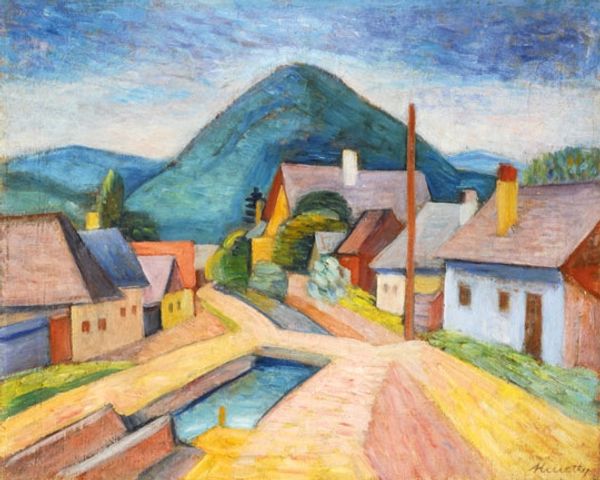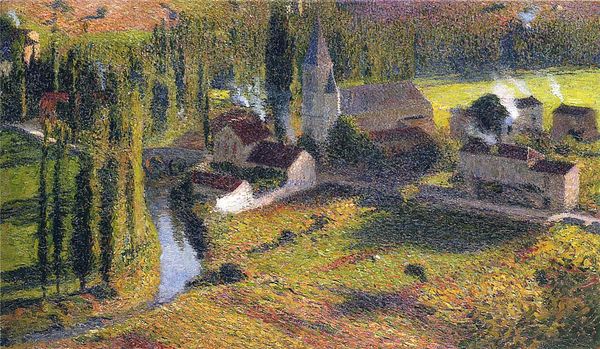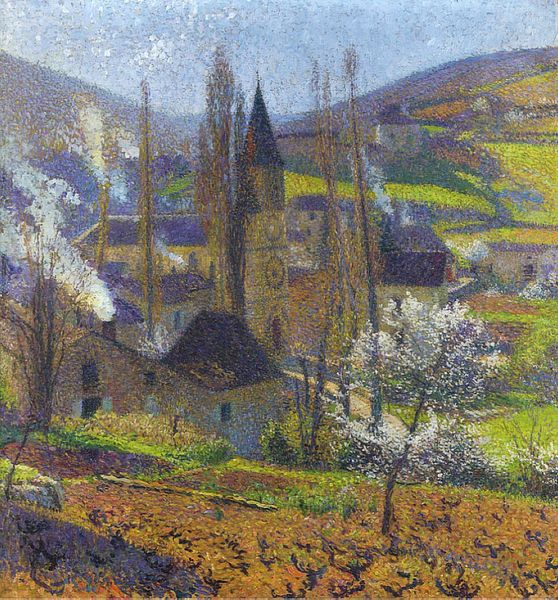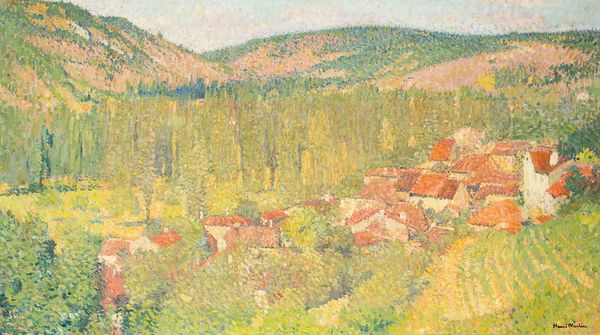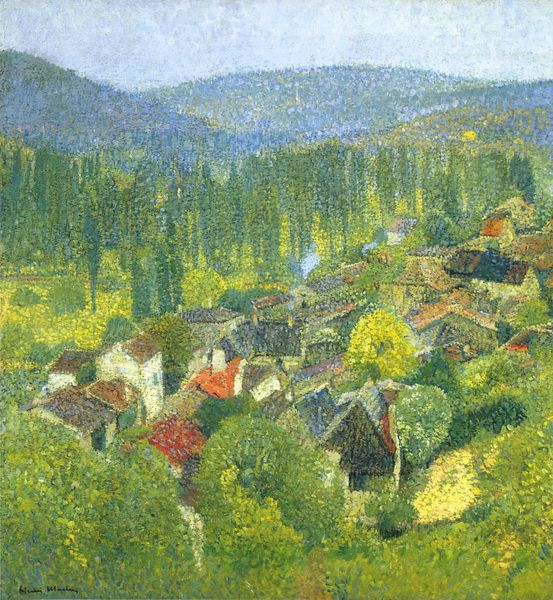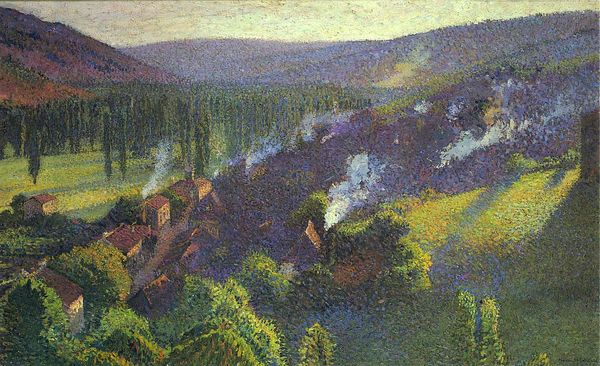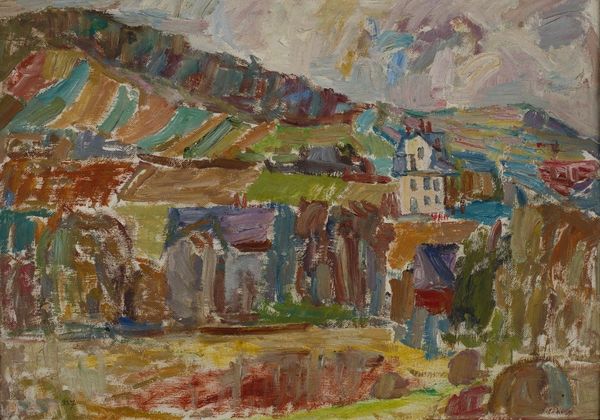
Dimensions: 110.5 x 96.5 cm
Copyright: Public domain
Editor: Here we have Henri Martin's "The Church at Labastide," painted around 1920. It’s acrylic on canvas, depicting a quaint town nestled in a valley. The whole thing feels so idyllic, almost like a postcard. What do you see in it? Curator: It's fascinating how Martin presents this rural scene. Post-Impressionism wasn't just about pretty landscapes; it was often about how rapid industrialization and urbanization were changing society. Look at how the church dominates the composition, but the cultivated fields surrounding it are equally prominent. What does that balance suggest to you about the values the artist might be highlighting? Editor: Well, I guess it could be about the tension between traditional rural life and the changes of the early 20th century. The church is there, strong, but nature and agriculture still define the area. Curator: Precisely! And consider who would have been viewing paintings like this at the time. Probably an increasingly urban art audience, yearning for a connection to an idealized countryside that was rapidly disappearing. Martin is not simply showing us a landscape; he is staging a societal contrast. He is presenting a picture of cultural identity at a time when social values were undergoing a great deal of change. What is your understanding of Post-Impressionism's impact in reflecting and shaping socio-political narratives during this era? Editor: It's cool how something that looks so peaceful can have so much going on underneath. I always thought that Post-Impressionism was primarily focused on form and aesthetics, but I didn’t know it had to do with social and cultural forces! Curator: Indeed. Art often holds a mirror to society and influences its values. Now, whenever you approach a work of art, remember to inquire about the socio-political issues and how these might reflect and shape broader narratives in the modern age.
Comments
No comments
Be the first to comment and join the conversation on the ultimate creative platform.
